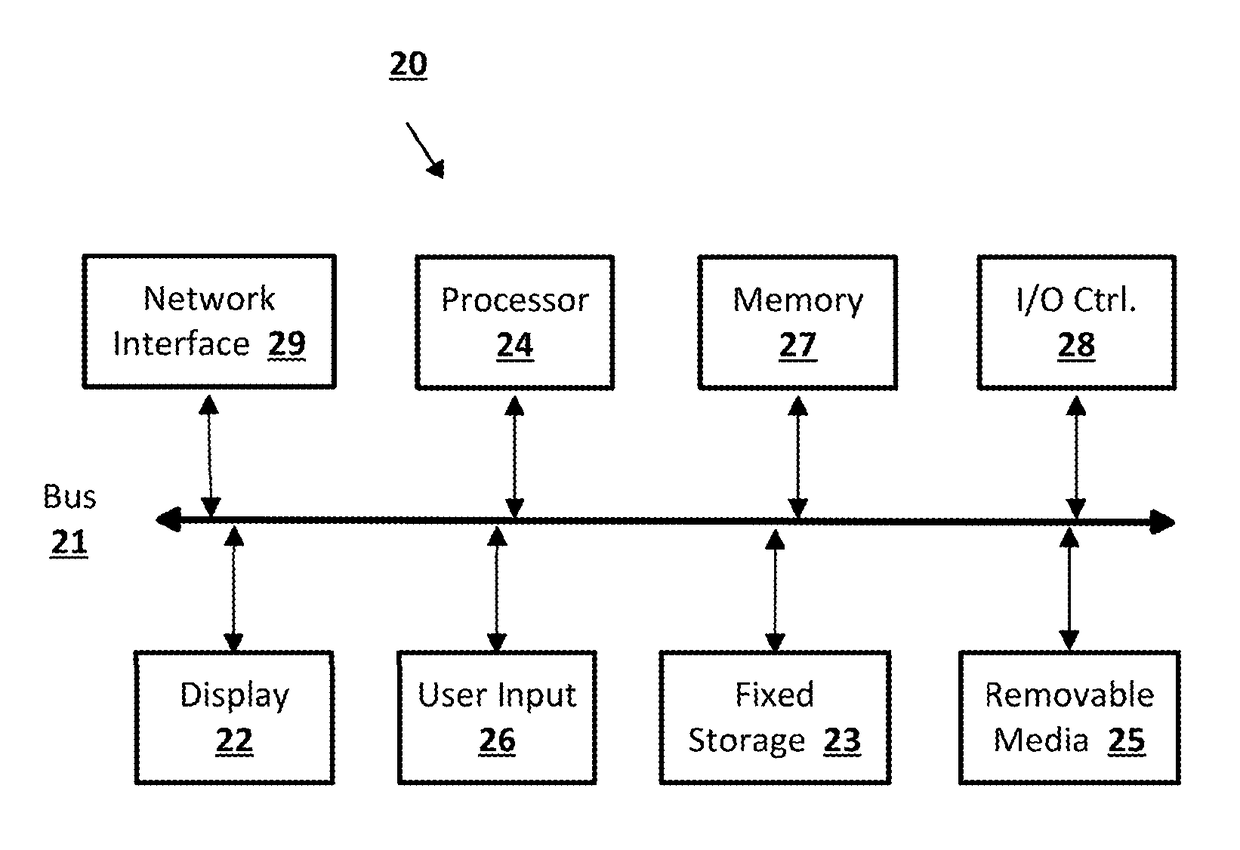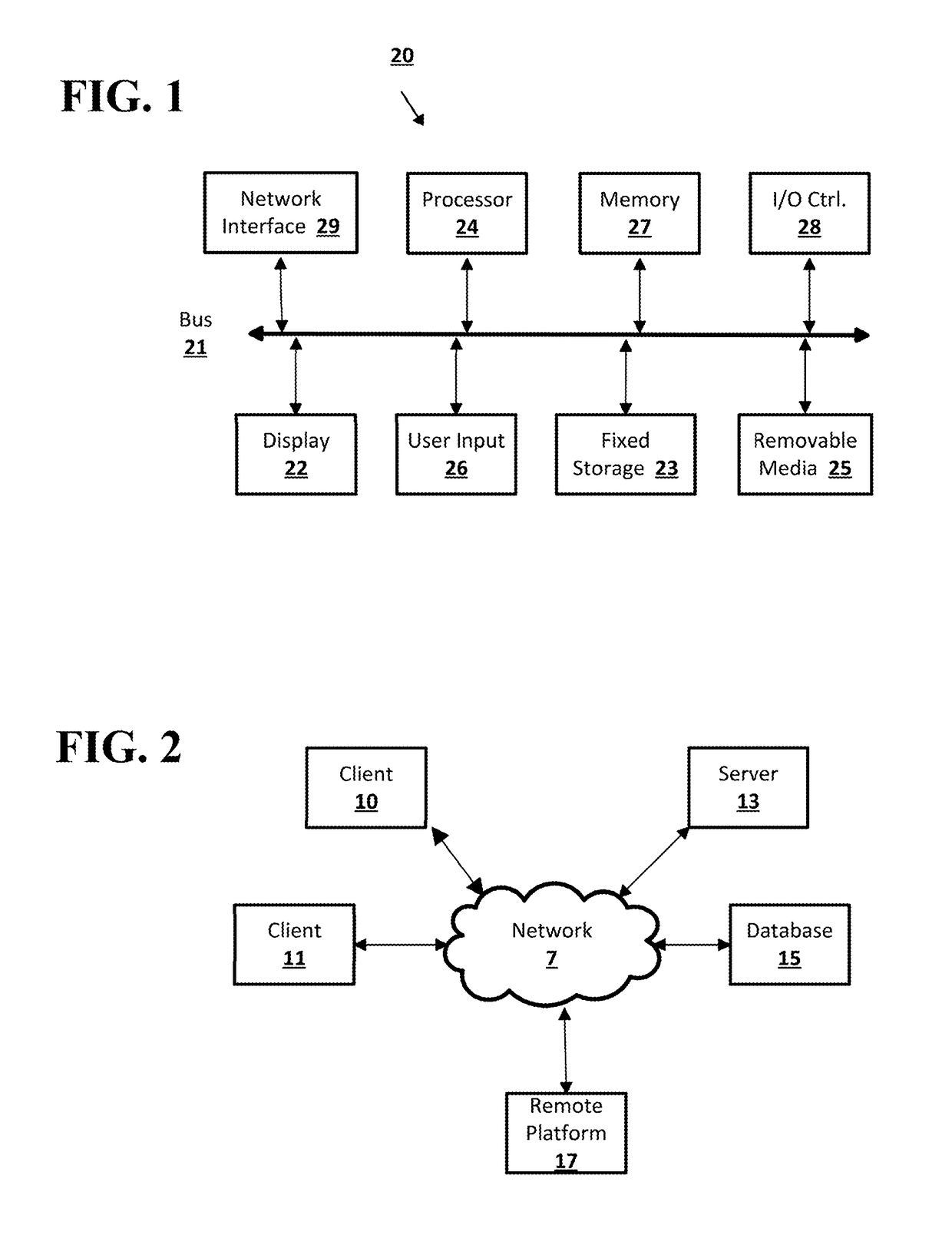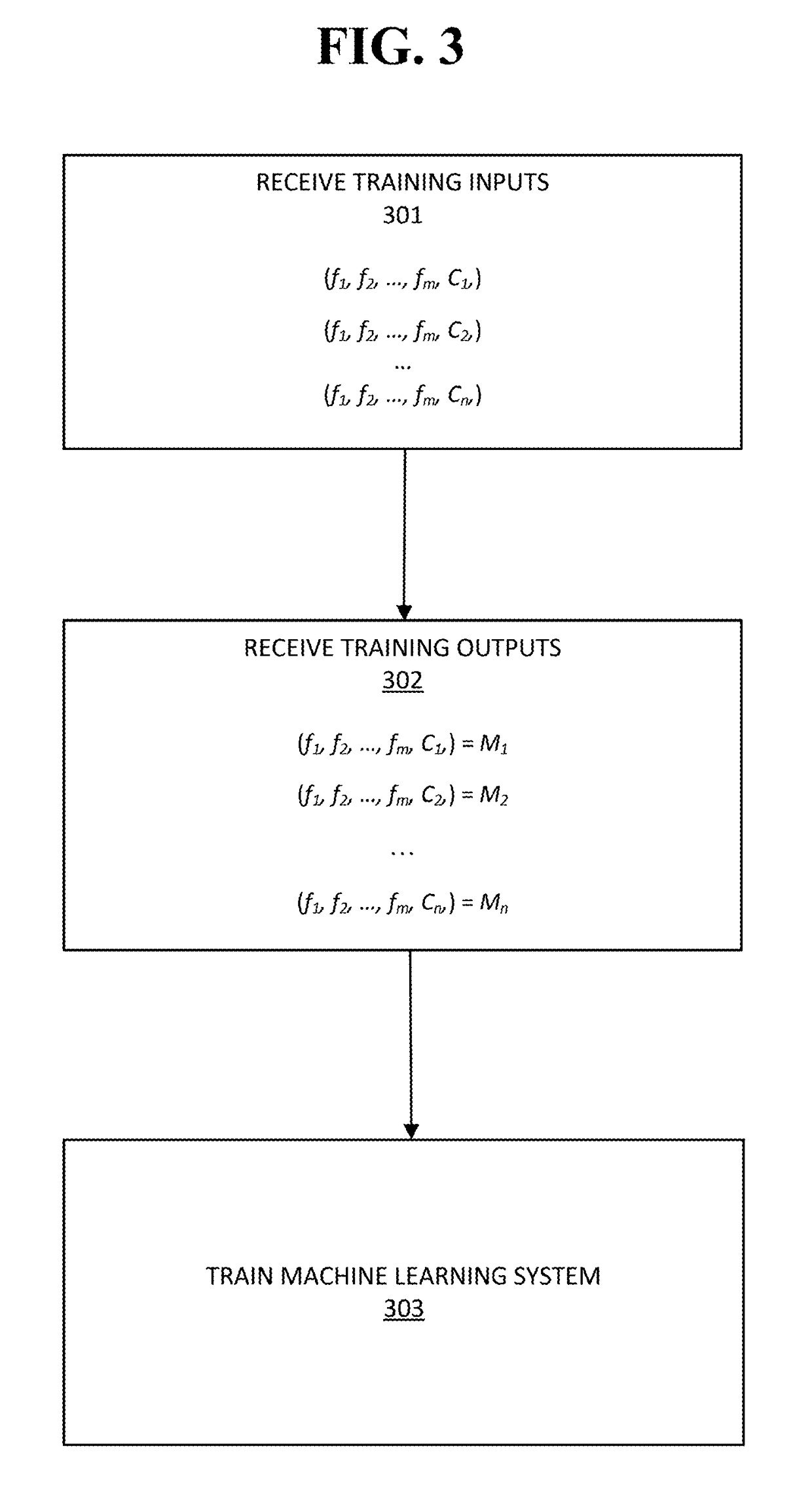Classification system
a classification system and classification algorithm technology, applied in the field of classification systems, can solve problems such as more complex implementation of classification algorithms than binary ones
- Summary
- Abstract
- Description
- Claims
- Application Information
AI Technical Summary
Benefits of technology
Problems solved by technology
Method used
Image
Examples
Embodiment Construction
[0018]An implementation of the disclosed subject matter can include a multi-class classification system that can determine if an event or object (“entity”) belongs to a set of classes based on the features that can describe the entity. An event can be an occurrence of any kind. An object can be a piece of data, such as a news article or identifier, a person, such as a user, etc. A set of training inputs (examples) can be used to train a machine learning system. In an implementation of the disclosed subject matter, an input can include one or more features and a class label. A class label can correspond to one or more attributes that are shared by members of a class. Each input can have a membership value that can indicate the membership status of the entity described by the features in the class denoted by the class label, which is included in the input. For example,
[0019]Input:FeaturesandClassLabel_MembershipValue_(f1,f2,…,fn,Ci){0,notamemberofCi1,isamember...
PUM
 Login to View More
Login to View More Abstract
Description
Claims
Application Information
 Login to View More
Login to View More - R&D
- Intellectual Property
- Life Sciences
- Materials
- Tech Scout
- Unparalleled Data Quality
- Higher Quality Content
- 60% Fewer Hallucinations
Browse by: Latest US Patents, China's latest patents, Technical Efficacy Thesaurus, Application Domain, Technology Topic, Popular Technical Reports.
© 2025 PatSnap. All rights reserved.Legal|Privacy policy|Modern Slavery Act Transparency Statement|Sitemap|About US| Contact US: help@patsnap.com



